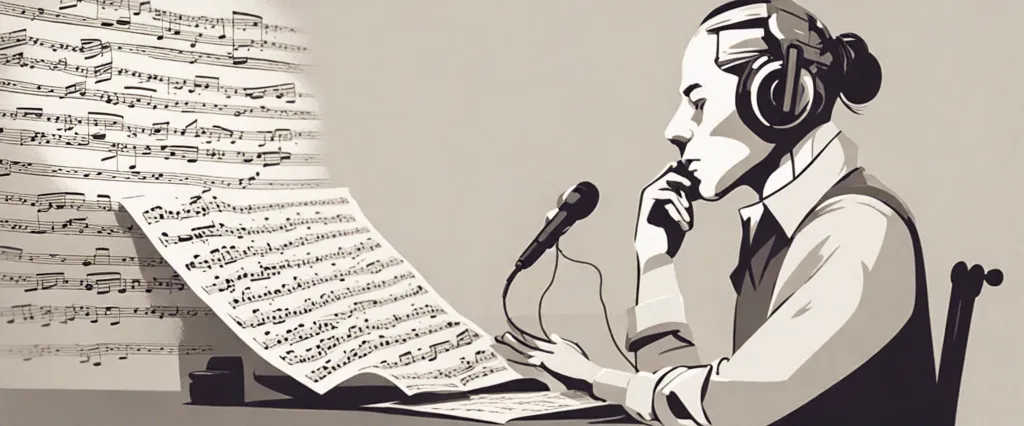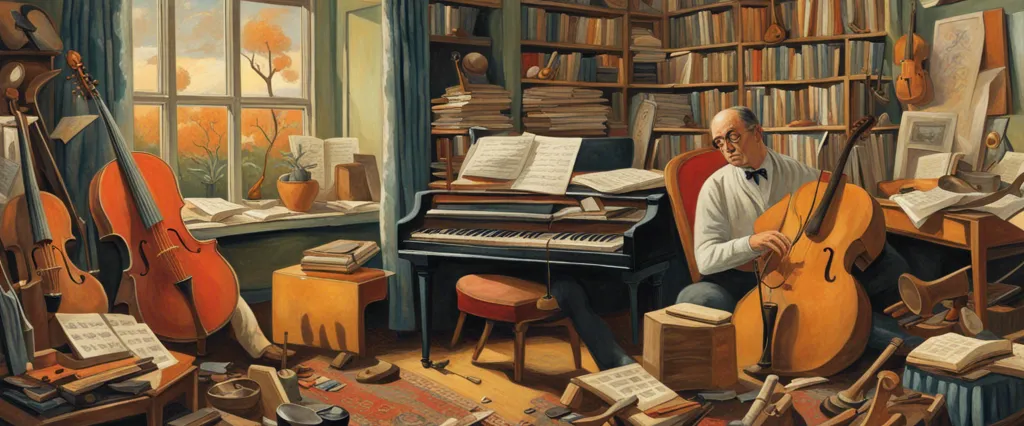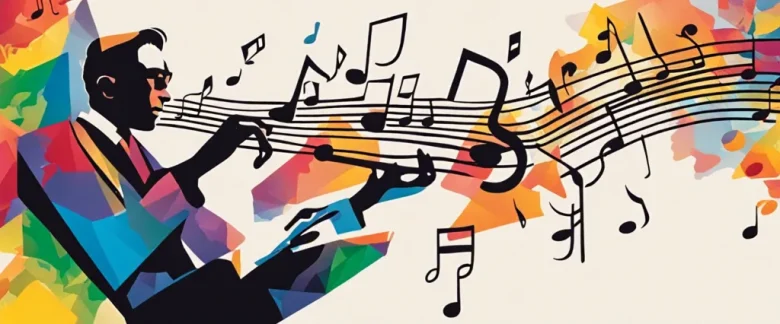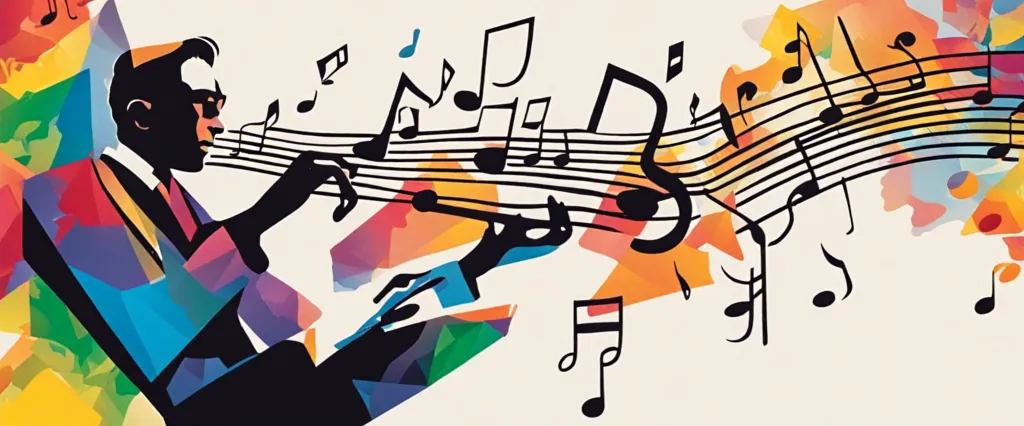In “What to Listen for in Music”, acclaimed composer Aaron Copland invites readers on an enlightening journey into the world of music appreciation. Filled with valuable insights and practical guidance, Copland’s book serves as a resourceful tool for both novices and experienced listeners alike. As one of America’s greatest composers, Copland’s vast knowledge and passion for music breathes life into every page, illuminating the intricate nuances and fundamental principles that shape our understanding and enjoyment of this powerful art form. His engaging style and ability to bridge the gap between technicality and accessibility make “What to Listen for in Music” an essential companion for anyone seeking a deeper connection with the music they encounter. Whether exploring classical masterpieces or contemporary compositions, Copland’s guidance empowers readers to unlock a richer, more meaningful experience with the music they hear.
Chapter 1: The Elements of Music
Chapter 1 of “What to Listen for in Music” by Aaron Copland introduces the basic elements of music and provides a framework for understanding the various components that make up a musical composition. Copland starts by expressing the importance of actively listening to music rather than passively hearing it, highlighting how a thoughtful approach can enhance one’s appreciation and understanding of any genre or style.
The chapter proceeds to examine four fundamental elements of music: rhythm, melody, harmony, and tone color. Copland defines rhythm as the organization of sound in time, emphasizing its role in establishing a sense of pulse and providing structure. He discusses the different rhythmic patterns and time signatures that can be found in various musical genres and how they contribute to the overall feel and mood of a piece.
Melody is described as a succession of pitches that form a recognizable tune. Copland explores the many ways in which melodies can be created, including using scales, intervals, and motives, and how they can evoke various emotions and express different musical ideas.
Harmony is the study of the relationships between different pitches played simultaneously. Copland explains the concept of chords, the building blocks of harmony, and how they can create tension and release within a composition. He further explores the concept of tonality, the concept of a central pitch around which other pitches revolve, and its significance in shaping a musical work.
Lastly, Copland introduces the element of tone color, describing it as the unique quality or timbre of a sound. He highlights how various instruments and their combinations can create different tones and moods, and how understanding tone color can enhance one’s appreciation of the overall sound palette in music.
Overall, Chapter 1 of “What to Listen for in Music” provides a foundation for understanding and appreciating the basic elements of music, setting the stage for further exploration in subsequent chapters.
Chapter 2: The Basic Elements of Form
Chapter 2: The Basic Elements of Form of the book “What to Listen for in Music” by Aaron Copland introduces the concept of musical form, which refers to the organization and structure of a piece of music. Copland emphasizes the importance of becoming familiar with the basic elements of form in order to better appreciate and understand various musical compositions.
The chapter begins by discussing the building blocks of musical form: phrases and periods. A phrase is a short musical idea, similar to a sentence, while a period is a series of phrases that form a complete musical thought. Copland explains that phrases are often organized into larger sections, such as sections A and B, which create contrast and variation within a piece of music.
The chapter then introduces the concepts of repetition and contrast. Repetition occurs when a musical idea is repeated, either identically or with slight variations, to create a sense of familiarity and coherence. Contrast, on the other hand, introduces new musical ideas or changes to create variety and tension. Copland explains that repetition and contrast work together to create a balance and maintain the listener’s interest throughout a composition.
The chapter also explores the concept of development, which involves the expansion and transformation of musical ideas. Copland uses the analogy of a storyteller who develops their plot by introducing new characters and events. Similarly, in music, development allows composers to explore and expand upon their initial musical ideas.
In conclusion, Chapter 2 of “What to Listen for in Music” provides an overview of the basic elements of form, including phrases, periods, repetition, contrast, and development. These elements are essential for understanding the structure and organization of music, and by familiarizing oneself with them, one can better appreciate and engage with various musical compositions.
Chapter 3: The Listening Process
Chapter 3: The Listening Process of the book “What to Listen for in Music” by Aaron Copland provides an in-depth exploration of the steps involved in the active process of listening to music. Copland emphasizes that listening is not a passive activity but requires concentration and engagement to fully appreciate and understand a piece of music.
The chapter begins by highlighting the importance of forgetting preconceived notions and biases before diving into a piece. Copland suggests approaching each listening experience with an open mind, allowing the music to speak for itself without any preconceived judgments.
Next, Copland guides the reader through the stages of the listening process. The first step is to grasp the overall structure and form of the music, identifying recurring melodies or themes. This enables the listener to follow the narrative or emotional trajectory of the piece.
The second step is to focus on the music’s rhythm and meter. Copland explains how rhythmic patterns establish a sense of pulse, creating a foundation for the music. He encourages listeners to tap their feet or clap along as a way to actively engage with the music’s rhythmic elements.
The third step involves paying attention to the music’s dynamics, or the variations in volume. Copland demonstrates how contrasts in dynamics contribute to the expressive qualities of a piece, highlighting tension, release, and emotions.
Finally, Copland explores timbre, or the unique quality of different instruments or voices. He explains how identifying and appreciating the timbral differences creates a richer listening experience.
Throughout the chapter, Copland emphasizes the importance of active listening and suggests various techniques, such as creating mental images or associations, to enhance the listener’s engagement with the music. By following the steps outlined in this chapter, listeners are better equipped to fully appreciate and understand the complexities and nuances of music.
Chapter 4: The Role of the Composer

Chapter 4: The Role of the Composer, from the book “What to Listen for in Music” by Aaron Copland, explores the fundamental responsibilities and creative processes of a composer. Copland highlights the significance of the composer’s vision, creativity, and craftsmanship in shaping musical compositions.
The chapter begins by emphasizing that composers are not merely the transcribers of music but rather the architects of sonic experiences. Their role is to conceive, design, and fashion the musical structure, themes, and emotions of a composition. Copland asserts that composers are imbued with a profound artistic responsibility to create music that resonates with the listener’s emotions and intellect.
The author further delves into the creative process of composing, noting that it involves a combination of inspiration, technique, and imagination. Copland emphasizes that composers are not confined to a fixed set of rules but have the freedom to experiment with different musical elements and techniques, resulting in unique works of art. They must possess a deep understanding of harmony, melody, rhythm, form, and orchestration to craft their compositions effectively.
Furthermore, Copland explores the relationship between the composer and the performer. He asserts that while composers indicate their desired interpretation through notation, it is the performer’s task to infuse the piece with their own artistic sensibilities, thus breathing life into the score. The collaboration between the composer and performer enriches the experience by adding a human touch and individual expression.
In conclusion, Chapter 4 of “What to Listen for in Music” emphasizes the crucial role of composers in the creation of musical masterpieces. Their artistic vision, technical skill, and ability to manipulate musical elements enable them to convey emotions, tell stories, and connect with listeners at a profound level. Composers have the power to captivate and inspire through their musical creations, leaving an indelible mark on the world of music.
Chapter 5: The Role of the Performer
Chapter 5 of “What to Listen for in Music” by Aaron Copland explores the crucial role of the performer in the interpretation and communication of a musical composition. Copland emphasizes that while the written score provides the foundation for a piece, it is up to the performer to breathe life into the music and convey the composer’s intentions to the audience.
The chapter begins by discussing the importance of understanding the historical context and stylistic conventions of a piece in order to interpret it effectively. Copland highlights how different time periods, such as the Baroque or Romantic era, require distinct approaches to performance. He also explains the significance of personal style and the role it plays in shaping a performer’s interpretation.
Copland then delves into the technical aspects of performance, focusing on elements such as tempo, dynamics, and phrasing. He stresses the need for performers to strike a balance between adhering to the composer’s intentions while adding their own artistic flair. Copland explains that a performer has the power to mold the music, making small adjustments to tempo or dynamics to enhance the emotional impact.
The author also discusses the importance of musical instincts and the role of the performer’s own personality in shaping a rendition. Copland acknowledges the inherent subjectivity of interpretation, emphasizing that it is this very subjectivity that makes performances unique and captivating.
Overall, Chapter 5 of “What to Listen for in Music” underscores the significant role of performers in bringing a musical composition to life. By understanding the historical context, technical aspects, and embracing personal style and interpretation, a performer has the power to create a dynamic and captivating musical experience for the audience.
Chapter 6: The Role of the Listener
In Chapter 6 of “What to Listen for in Music” by Aaron Copland, titled “The Role of the Listener,” the author delves into the important role that listeners play in the experience of music. Copland emphasizes the active participation and engagement required from the listener to truly appreciate and understand music.
He starts by highlighting various elements and potential hindrances to effective listening. He emphasizes the need for attention, concentration, and focused effort on the part of the listener. Copland warns against passive listening, where the music serves merely as background noise. Instead, he encourages active listening, where the listener actively engages with the music, both mentally and emotionally.
Additionally, Copland discusses the influence of personal preferences and familiarity with certain musical styles or genres. He reminds listeners to remain open-minded and willing to explore various types of music, as this can lead to a more profound and diverse musical experience.
The author also addresses the idea of listening with a critical ear. He explains that critical listening involves assessing the quality and merit of the music being heard. Copland emphasizes the essential role of personal judgment and opinions in this process, acknowledging that each individual may experience and interpret music differently.
Ultimately, Copland emphasizes the power and potential of the listener’s role in the music-making process. The listener’s active engagement, open-mindedness, emotional connection, and critical awareness contribute to enriching their understanding and appreciation of music.
Chapter 7: The Influence of Historical and Social Contexts
Chapter 7 of “What to Listen for in Music” by Aaron Copland explores the impact of historical and social contexts on music. Copland emphasizes that studying music in isolation of its historical and social settings would be incomplete, as these factors heavily influence the creation and reception of music.
The chapter begins with an exploration of how music is influenced by the society it belongs to, such as political events, cultural values, and societal norms. Copland emphasizes that music is a reflection of the times and can provide valuable insights into the attitudes and beliefs of a particular era. He uses examples from different periods of history to illustrate this point, ranging from the Renaissance to the Romantic period.
Copland further highlights the significance of historical context by discussing how music changes over time. As society evolves, so does music. He examines the transition from the Baroque period to the Classical period, showcasing how the change in artistic styles and philosophies impacted composers’ approaches to music. Additionally, Copland explains how societal advances, such as the Industrial Revolution, affected the development of new musical instruments and genres.
The author also explores the concept of nationalism in music. He discusses how composers draw inspiration from their native countries, culture, and folklore to create distinct musical identity. Copland points out that nationalism in music can serve as a form of cultural preservation and defining a nation’s heritage.
In conclusion, Copland emphasizes the importance of considering historical and social contexts when analyzing and appreciating music. By understanding the circumstances in which music is created, listeners gain a deeper appreciation for the music’s meaning and its impact on society.

Chapter 8: The Future of Music
Chapter 8 of “What to Listen for in Music” by Aaron Copland, titled “The Future of Music,” explores the author’s predictions and hopes for the direction and development of music in the coming years. Copland highlights several key aspects that he believes will shape the future of music.
One of the main ideas Copland discusses is the idea of a balance between tradition and experimentation. He argues that while innovation is essential for the progress of music, it must also be grounded in a strong foundation of established musical practices. Copland proposes that the future of music lies in the synthesis of old and new ideas, creating a unique sound that is both innovative and accessible.
Furthermore, Copland emphasizes the importance of individuality and originality in music. He encourages composers to find their own voice and not be bound by previous conventions. He believes that true artists must strive for honesty and authenticity in their compositions, expressing their unique experiences and emotions.
Another significant aspect Copland discusses is the potential influence of technology on music. He predicts that technological advancements, such as electronic instruments and recording techniques, will continue to broaden the possibilities for musical expression. Copland envisions a future where musicians embrace these advancements, using them as tools to create new sounds and further expand the boundaries of traditional music.
In conclusion, Chapter 8 of Copland’s book presents an optimistic outlook on the future of music. He believes that the fusion of tradition and experimentation, along with the cultivation of individuality and the integration of technology, will lead to exciting and innovative musical compositions. Copland’s vision is one where composers continue to push boundaries and explore new horizons while staying rooted in the rich history and traditions of music.
After Reading
In conclusion, Aaron Copland’s book “What to Listen for in Music” serves as an insightful and comprehensive guide for both musicians and non-musicians alike. Through his extensive knowledge and experience as a composer, Copland offers a deeper understanding of the various elements that comprise music and how to appreciate them. From melody and harmony to rhythm and form, he breaks down each component with clarity and provides numerous examples from classical, jazz, and popular music genres. Copland’s emphasis on active listening encourages readers to engage with music on a more thoughtful and profound level, ultimately enhancing their overall musical experience. With its accessible writing style and practical insights, “What to Listen for in Music” is an invaluable resource that enriches one’s appreciation and enjoyment of the art form.
1. “How to Listen to Jazz” by Ted Gioia – This book explores the intricacies of jazz music, teaching readers how to appreciate the improvisation, harmony, and rhythm that make this genre unique. Gioia breaks down various jazz styles and provides historical context, enhancing readers’ ability to truly engage with and understand jazz music.
2. “The Rest Is Noise: Listening to the Twentieth Century” by Alex Ross – Ross takes readers on a captivating musical journey through the 20th century, delving into the works of composers like Stravinsky, Schoenberg, and Copland himself. With lively storytelling and in-depth analysis, Ross narrates the evolution of classical music during this turbulent era, making it accessible and enjoyable for both novices and enthusiasts.
3. “How to Listen to Great Music: A Guide to Its History, Culture, and Heart” by Robert Greenberg – Greenberg provides a comprehensive guide to Western classical music, offering a rich historical and cultural context while examining key pieces from different eras. Exploring major composers and their masterpieces, this book helps readers understand the impact and significance of each musical era.
4. “The Jazz Theory Book” by Mark Levine – Aimed at intermediate and advanced jazz enthusiasts, this comprehensive guide goes beyond simple listening and delves into the theoretical aspects of jazz. Levine covers topics such as chord progressions, scales, and improvisation techniques, helping readers deepen their understanding of jazz and empowering them to analyze and appreciate it on a higher level.
5. “The NPR Curious Listener’s Guide to Classical Music” by Tim Smith – Designed for those curious about classical music, this book introduces readers to the essentials of the genre. Smith covers a wide range of topics, including famous composers, key compositions, and notable performances, providing readers with an engaging and accessible exploration of classical music’s rich history and vast repertoire.




